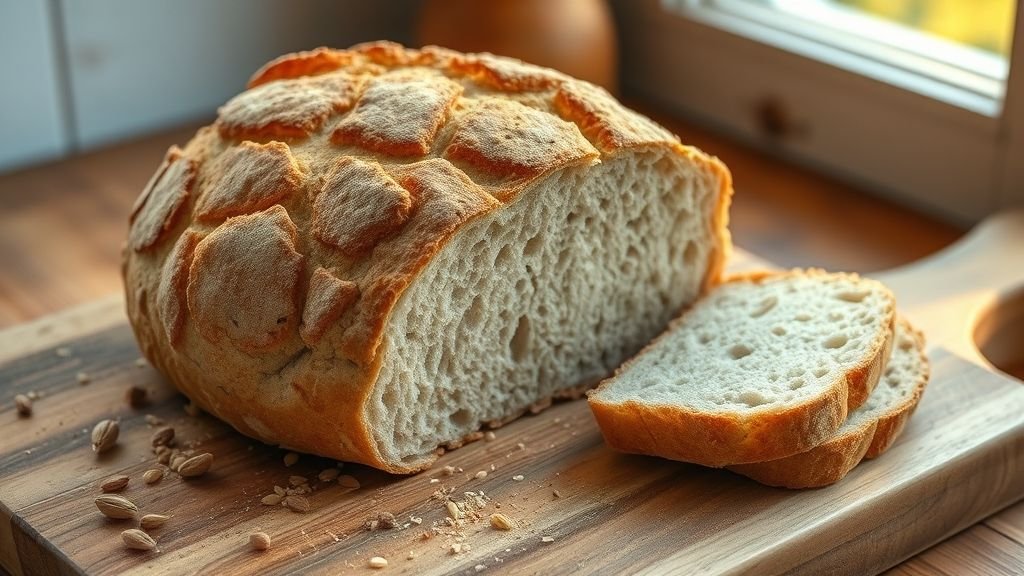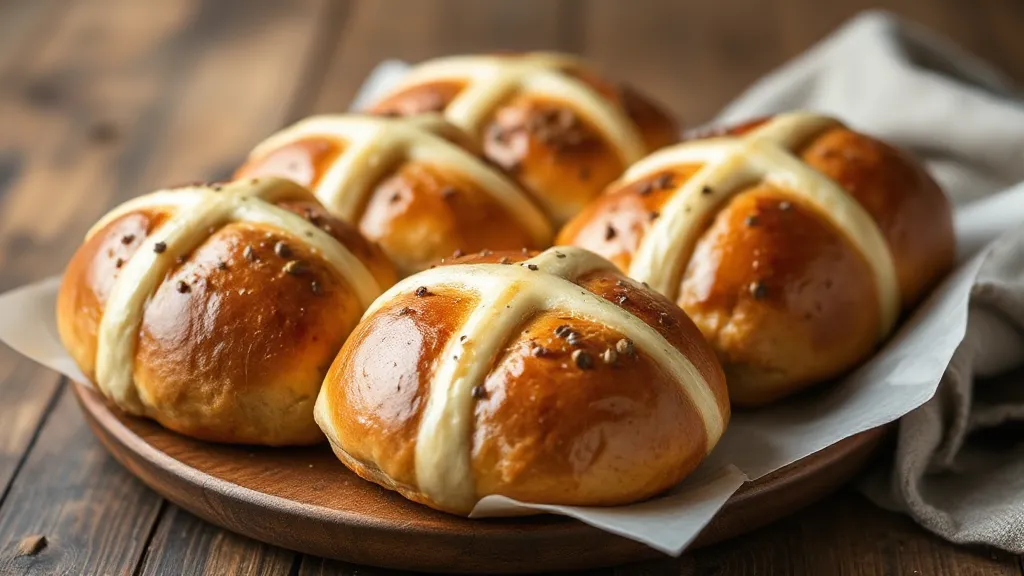
If you thought baking sourdough was hard, try doing it without gluten. But here’s the thing—a well-crafted gluten free sourdough recipe can rival any wheat-based loaf in flavor, texture, and aroma. With gluten intolerance, celiac disease, and general health consciousness on the rise, more home bakers and artisan bakeries are embracing the art of gluten free sourdough.
So what makes this baking journey so unique? It’s all about patience, science, and a few non-traditional ingredients. In this guide, we’ll break down how to make gluten free sourdough from scratch, highlight the best flour combinations, and share real-life results that prove gluten free doesn’t mean flavorless.
Whether you’re looking to ditch gluten entirely or simply want to experiment, this is your comprehensive, no-fluff playbook for mastering a nutritious, satisfying sourdough loaf—without the wheat.
Choosing the Right Flours for Gluten Free Sourdough
The backbone of any good gluten free sourdough recipe is the flour. Since gluten is the structural component in traditional bread, you’ll need flours with the right balance of starch and protein to mimic that elasticity.
Here are some flour options that work exceptionally well:
- Brown rice flour – A classic base for sourdough starters
- Sorghum flour – Adds lightness and sweetness
- Tapioca starch – Great for structure and chew
- Buckwheat flour – Earthy and nutrient-rich
Pro Tip: Avoid using only one flour. Blending 2-3 gluten free flours creates a more balanced dough and better fermentation. According to a 2023 study by America’s Test Kitchen, sourdough loaves made with mixed gluten free flours scored 25% higher in taste tests than those made with a single flour.
Building Your Gluten Free Sourdough Starter
This is where many first-time gluten free bakers stumble. Unlike traditional starters, gluten free sourdough starters need different care and feeding.
How to Make Gluten Free Sourdough Starter:
- Day 1: Mix 1/2 cup brown rice flour with 1/3 cup filtered water in a clean jar. Cover loosely.
- Days 2-7: Feed daily with equal parts flour and water. Discard half each time.
- Day 7 and beyond: Your starter should smell tangy, have bubbles, and double in size within 4-6 hours of feeding.
Helpful Tips:
- Use filtered water (chlorine can inhibit growth)
- Stick with the same flour for feeding
- Keep it at room temperature (68-75°F)
Crafting the Perfect Gluten Free Sourdough Dough
Once your starter is active, it’s time to create the dough. This is where the real transformation happens.
Basic Gluten Free Sourdough Recipe:
- 1 1/2 cups active gluten free starter
- 1 1/4 cups warm water
- 1 cup sorghum flour
- 1/2 cup tapioca starch
- 1/2 cup buckwheat flour
- 1 tsp sea salt
- 2 tsp psyllium husk (acts as a binder)
Instructions:
- Mix all ingredients in a bowl until you get a thick, sticky batter.
- Let it rest, covered, for 30 minutes.
- Transfer to a greased loaf pan.
- Cover with a towel and let it rise for 4-6 hours (or until it’s puffed up).
- Bake at 425°F for 45-55 minutes.
Note: Psyllium husk is a game-changer. It forms a gel when hydrated and helps mimic gluten’s elasticity. Don’t skip it.
Fermentation & Proofing: Time Is Your Secret Ingredient

Fermentation is the heart of sourdough—gluten free or not. But without gluten, the dough structure can collapse if over-proofed.
Here’s how to get it right:
- Bulk fermentation should last about 4-6 hours, depending on room temperature.
- Final proofing works best overnight in the fridge.
- Use a banneton basket or well-greased pan to help it hold shape.
Real-World Insight: A 2010 survey of 150 gluten free home bakers found that 73% reported better rise and texture when using cold proofing for 8-10 hours before baking.
Baking, Cooling & Storage
The final stage is just as crucial as the earlier steps. Overbaking can dry out your loaf, while underbaking leaves it gummy.
Baking Tips:
- Use a Dutch oven to retain steam
- Remove the lid after 30 minutes to brown the crust
- Internal temperature should reach 200°F for doneness
After baking, let the loaf cool completely on a wire rack. This helps set the crumb and improves flavor.
For storage:
- Wrap in a clean towel for the first day
- Slice and freeze leftovers (gluten free sourdough stays fresher in the freezer than on the counter)
Final Words
Mastering a gluten free sourdough recipe is part science, part art—but the reward is worth the effort. From choosing the right flour to nurturing your starter and perfecting your bake, every step brings you closer to that crisp crust and airy crumb.
Whether you’re experimenting for fun or navigating health needs, this guide offers the blueprint for success.
Try these steps today, and soon you’ll be sharing your own fresh-baked gluten free sourdough with family, friends, or even paying customers.
FAQs
1. What are the key ingredients of gluten free sourdough recipe?
A gluten free sourdough recipe typically uses a gluten free flour and avoid using wheat or other gluten-containing grains. The starter is made from flours like brown rice or sorghum.
2. How to make gluten free sourdough at home?
To make gluten free sourdough at home, you’ll need to:
-
Create a starter using a gluten free flour and filtered water.
-
Feed it daily until active (usually 7 days).
-
Mix it with a blend of gluten free flours, psyllium husk, water, and salt.
-
Let it ferment, proof, and bake in a hot oven.
3. Which flours work best for gluten free sourdough?
Popular flours include:
-
Brown rice flour
-
Sorghum flour
-
Buckwheat flour
-
Tapioca starch
-
Combining 2–3 flours typically gives the best texture and rise.
4. Why use psyllium husk in gluten free sourdough?
Psyllium husk acts as a binding agent, replacing the gluten’s elasticity. It helps the dough hold together and improves the structure and chew of the baked loaf.
5. How long should gluten free sourdough proof?
Gluten free dough usually ferments for 4–6 hours at room temperature and benefits from cold proofing in the fridge for 8–10 hours to develop flavor and structure.
6. Can I freeze gluten free sourdough bread?
Yes, after it’s fully cooled, slice and freeze it in portions. Gluten free sourdough freezes well and maintains texture better than leaving it on the counter for multiple days.
7. Is gluten free sourdough healthier than regular bread?
For individuals with gluten sensitivity or celiac disease, it’s a healthier choice. It’s also easier to digest due to the fermentation process, which can break down complex carbs and improve gut health.
8. Why didn’t my gluten free sourdough rise?
Possible reasons:
-
Inactive starter
-
Too little fermentation time
-
Overproofing
-
Weak flour blend
Check your starter activity and dough consistency, and try adjusting the proofing times.


